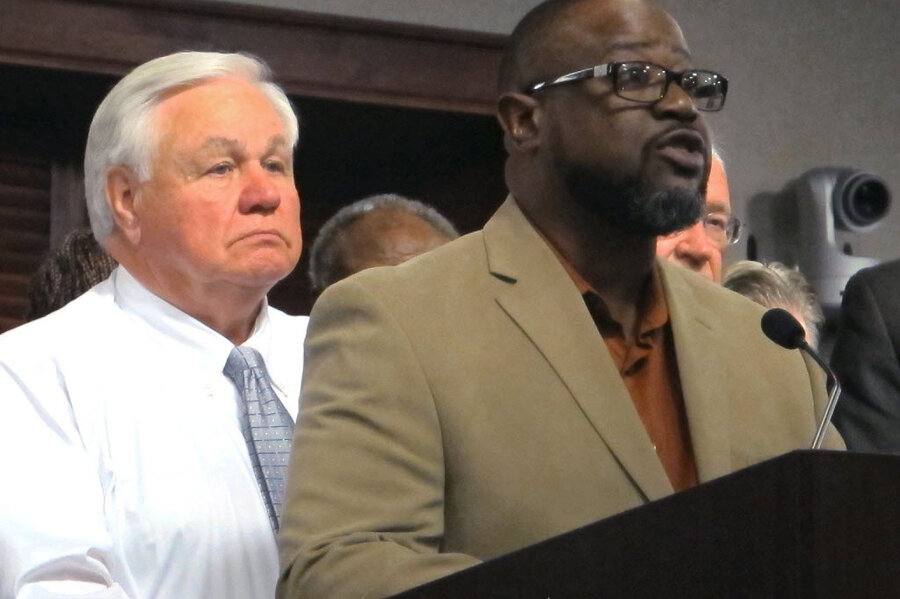What cities can learn from one community's handling of police shooting
Loading...
North Charleston, S.C., remains an exception to the recent trend of violent protests and clashes between police and citizens prompted by the killing of an unarmed black man by a white police officer.
The most recent development in the South Carolina city came Thursday when the North Charleston City Council unanimously approved a $6.5 million settlement for the family of Walter Scott, who was fatally shot by police officer in April. The settlement came without protests or violence, and with the support of the community and city.
“People mention Baltimore. People mention Ferguson. People mention New York,” North Charleston City Attorney Brady Hair told the Associated Press, noting where violence broke out. “What’s different here is there were no acts of violence... none of us did anything to escalate this into an uncontrolled environment.”
An attorney for the Scott family, Chris Stewart, agreed with Mr. Hair that the handling of the situation by both sides has been “almost a blueprint of how these situations should be handled.”
When Mr. Scott was shot on April 4, the situation did not look like it would end peacefully. There had been precedent in several cities of similar situations prompting clashes and tensions between police and citizens. A bystander had also captured a now infamous video of the shooting, showing clearly that Scott was running away when police officer Michael Slager fired eight times.
The video also shows Mr. Slager running to pick up his own Taser and then dropping it on the body of Scott.
Despite the video, Scott’s family called for calm.
“The family took steps to keep the community calm, and for that the city is thankful,” North Charleston Mayor Keith Summey told the AP.
The city also took forward-thinking steps to address the situation. Mayor Summey contacted the family about reaching a settlement within days of the event. Attorneys had months to work out an amicable settlement, which was unanimously passed by the city council, 10-0, on Thursday.
Slager has been indicted on murder charges. The judge presiding over the case refused to set bail, saying his release would be “an unreasonable danger to the community.” Slager has also been fired by the police department and has been detained in solitary confinement.
The swift arrest and denouncement of Slager's actions contrasted with the stark divisions between police and the community that arose following other shootings of black men at the hands of white police officers. As The Christian Science Monitor reported at the time:
There was no attempt to close ranks around the officer. Instead, the mayor and police chief visited the victim’s family [just two days after the shooting] and announced they would provide a police escort for Scott’s funeral. The mayor also issued an executive order that all the city’s police officers must start wearing body cameras.
Slowly, and perhaps inconsistently, the wide latitude that society has long given police officers who say their lives are in danger is beginning to change.
The mayor told the AP that the North Charleston police will be working with a Department of Justice division that helps resolve issues of racial or gender issues.
The relatively calm solution that was reached in the city was not due to an apathetic population, instead attorneys for both the city and family believe it was the quick actions by all involved that kept the peace. Many are hoping that North Charleston might become a blueprint on how to handle these difficult situations.
City attorney Hair has said the $6.5 million settlement is the largest of its kind in the state’s history for such cases.
“We have set a prototype, a standard for how these types of situations can be handled,” Justin Bamberg, a state representative and one of the attorneys who represented the Scott family told the AP.
This report contains material from the Associated Press.








